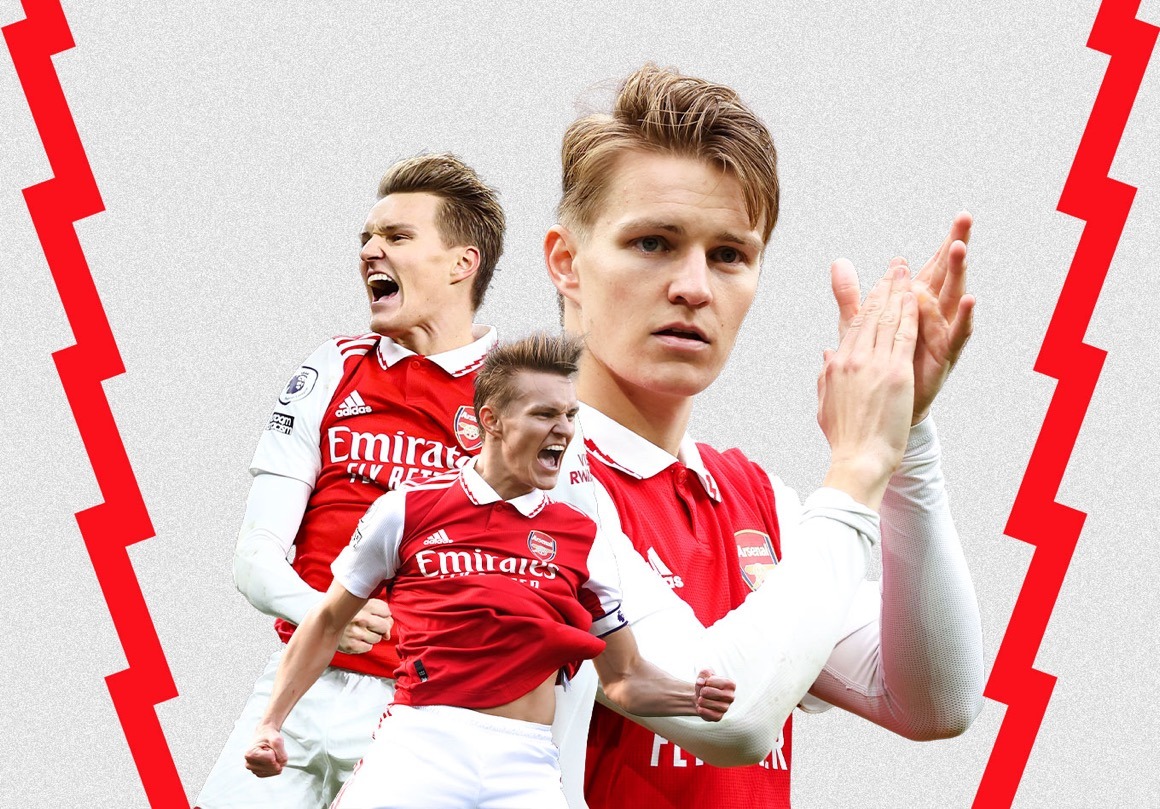Arsenal might not win the Premier League this season, but there are plenty of positives to take from their title challenge – not least the astonishing development of their captain.
Given how his career took off almost a decade ago, it has been a relatively slow rise to the top for Martin Ødegaard. But now, nine years on from Real Madrid winning a hotly contested race for his signature and an international debut at the age of just 15, the Norwegian has become one of the game’s most complete midfielders.
Named Arsenal captain at the start of this season when he was still only 23, he has been a huge part of the reason Mikel Arteta’s side were able to bridge the financial gap and sustain such an impressive title challenge against the wealth of Manchester City. Handed more responsibility both on and off the pitch, as well as both with and without the ball, Ødegaard exhibits a maturity far beyond his years.
To those who know him best, though, the way he has established himself as one of the most effective players in the Premier League will have come as no shock. The talent has always been there; that’s of course what caught Real Madrid’s eye back in 2015. Around the time of his breakthrough at Strømsgodset and the move to Real that followed, his former manager in Norway, David Nielsen, compared him to Lionel Messi and David Silva. High praise indeed, particularly for a teenager.
However, what has set him apart and allowed him to overcome the setbacks he has suffered over the course of his career – most notably the ultimate failure of his move to Real – is how hard he works. He has always been astoundingly single-minded in his drive to succeed and make it to the top.
“He came to us knowing what he wanted,” Johnny Jansen, one of Ødegaard’s coaches during his loan spell at Heerenveen in 2017-18, tells Opta Analyst. “His goal was to go back to Real Madrid and be one of the [starting] 11.
“He worked so hard on the training pitch, and so hard in matches. Everyone loved to play with him because he was just a normal guy who loved to play football and was really, really special on the pitch.”
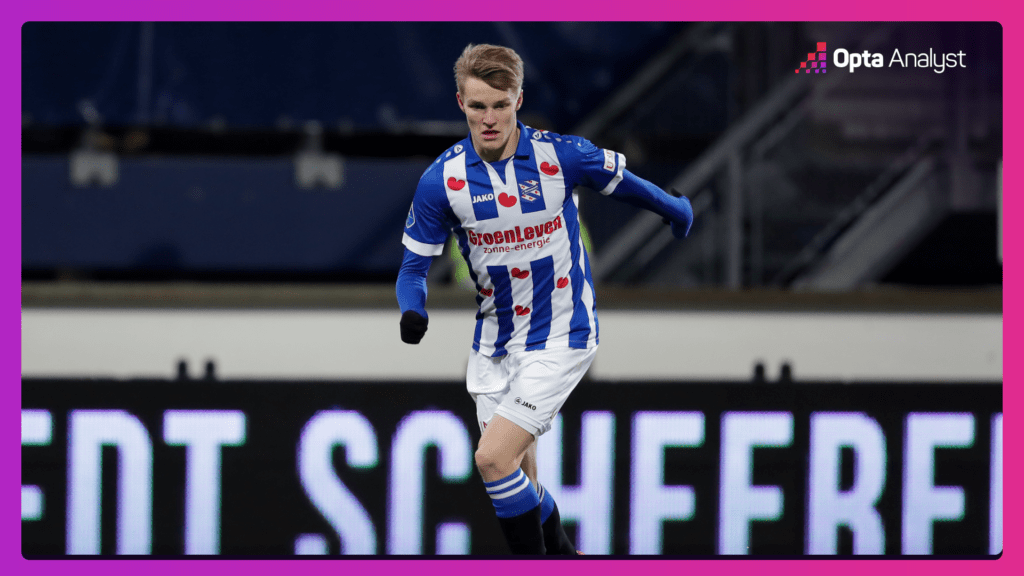
Playing on the right side of attack in the Eredivisie rather than centrally because “he needed to develop physically” to play in central midfield, according to Jansen, Ødegaard always wanted to come inside to get on the ball. He was almost drawn towards it. This helped the team because they had Denzel Dumfries – now a Champions League finalist with Inter Milan – overlapping from full-back and Ødegaard left space for him on the outside while “adding another central midfielder” in the middle of the pitch. He moved towards the ball to receive to feet as often as possible. Jansen is the first to acknowledge that he had a lot of work to do to improve at that age, and insists the most important thing was “playing games every week,” which meant the loan was a good move for his development at that stage of his career.
Over the years, Ødegaard has slowly improved with more game time at an increasingly high level, but this season the development in his game has been remarkable. A more mature 23-year-old Ødegaard had been made Arsenal captain by manager Mikel Arteta ahead of what was, incredibly, to be his ninth campaign in first-team football. Arteta recognised that Ødegaard, still a youngster by most measures but vastly experienced for his age, could be given more responsibility – both with and without the ball – in more advanced areas of the pitch.
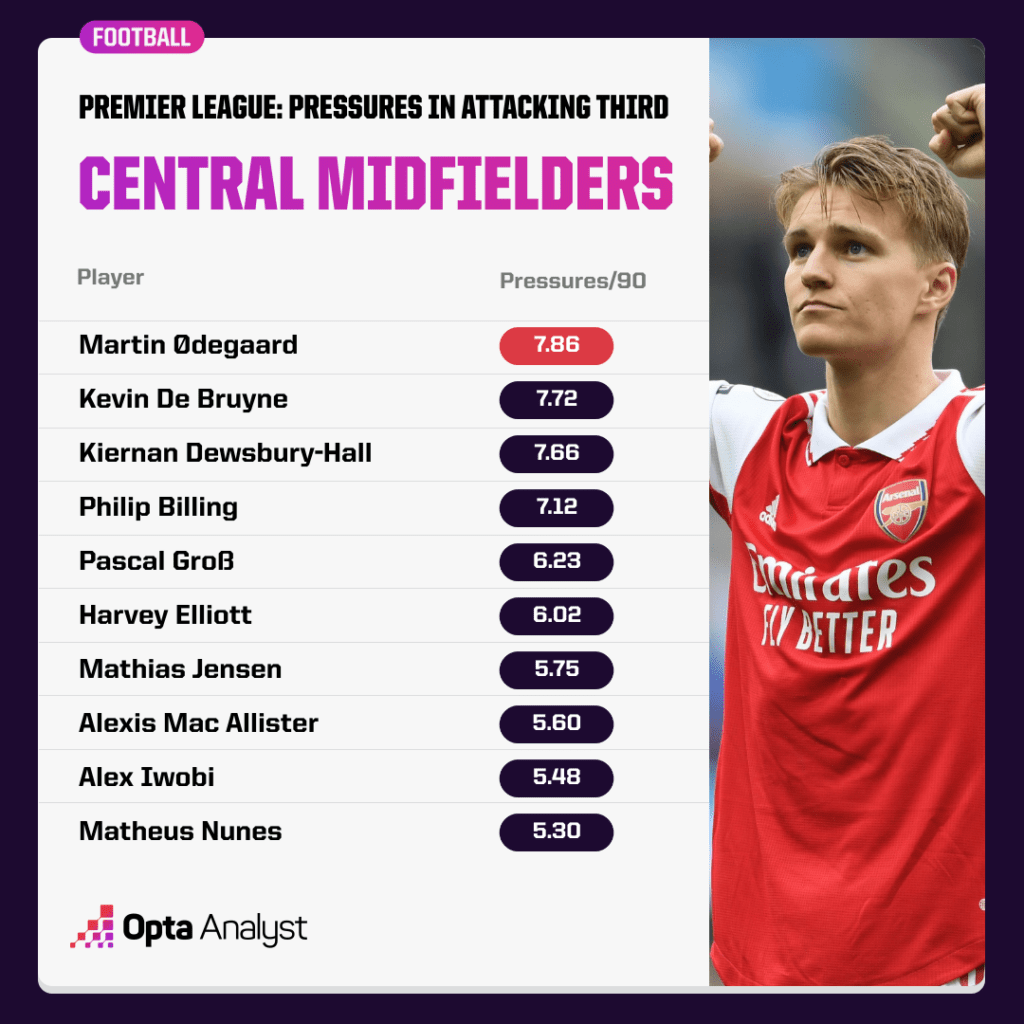
Arteta has harnessed Ødegaard’s work rate, and his captain has become one of the best pressing midfielders in the Premier League as a result. He is often the player leading the Arsenal press, higher up the pitch than anyone else on the team and happy to run vast distances to jump out from his position in midfield and engage an opposing centre-back. The Norwegian has made more pressures in the final third per 90 minutes than any other central midfielder in the Premier League in 2022-23 (7.9) and has also won possession more times in the final third of the pitch than any other player, with 46. His closest challenger is Leeds’ Jack Harrison, with 10 fewer, on 36. In other words, nobody else comes close to his success in winning the ball back high up the pitch, which is something Arteta has asked his team to do far more of this season, particularly since the signing of Gabriel Jesus – arguably the Premier League’s best pressing number nine. Arsenal’s out-of-possession shape often looks like a 4-4-2, with Ødegaard alongside the centre-forward in their highest line.
The biggest change for Ødegaard, however, has been that Arteta has also asked his captain to – sometimes, at least – fight his desire to go after the ball.
Ødegaard is accustomed to being one of the best ball-players in his team. What naturally comes with that is wanting to get on the ball as much as possible. Arteta decided he wanted his captain to stay higher up the pitch this season and look to use his ability to affect the game in more advanced areas, when previously he would have dropped deeper to help build and start attacks. The results have been astonishing.
He is still, despite playing higher up the pitch, involved heavily in his team’s moves – just in more advanced positions than before. He is getting on the ball in more dangerous areas and having 1.6 more touches in the penalty area per 90 minutes as well.
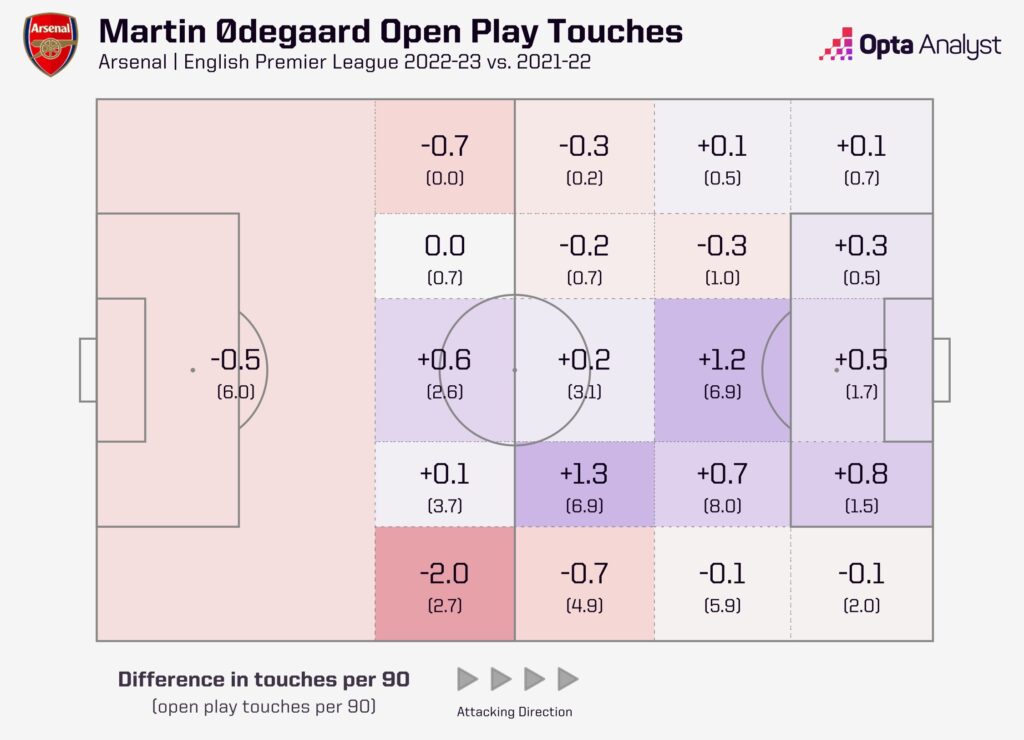
And yet, only Bruno Fernandes (259) has been involved in more open-play attacking sequences that end in a shot than Ødegaard (225). He ranks fourth when these numbers are calculated on a per-90 basis, too. He is third, meanwhile, behind only Erling Haaland (38) and Kevin De Bruyne (33) for the number of involvements in open-play attacking sequences that end in a goal, with 32. It would probably be fair to assume that, given the difference in profile of the two Norwegians that Haaland’s numbers are boosted by the goals he scores and Ødegaard does more creative work. That is true to some extent, but Ødegaard has also become more of a focused goal threat than he was before.
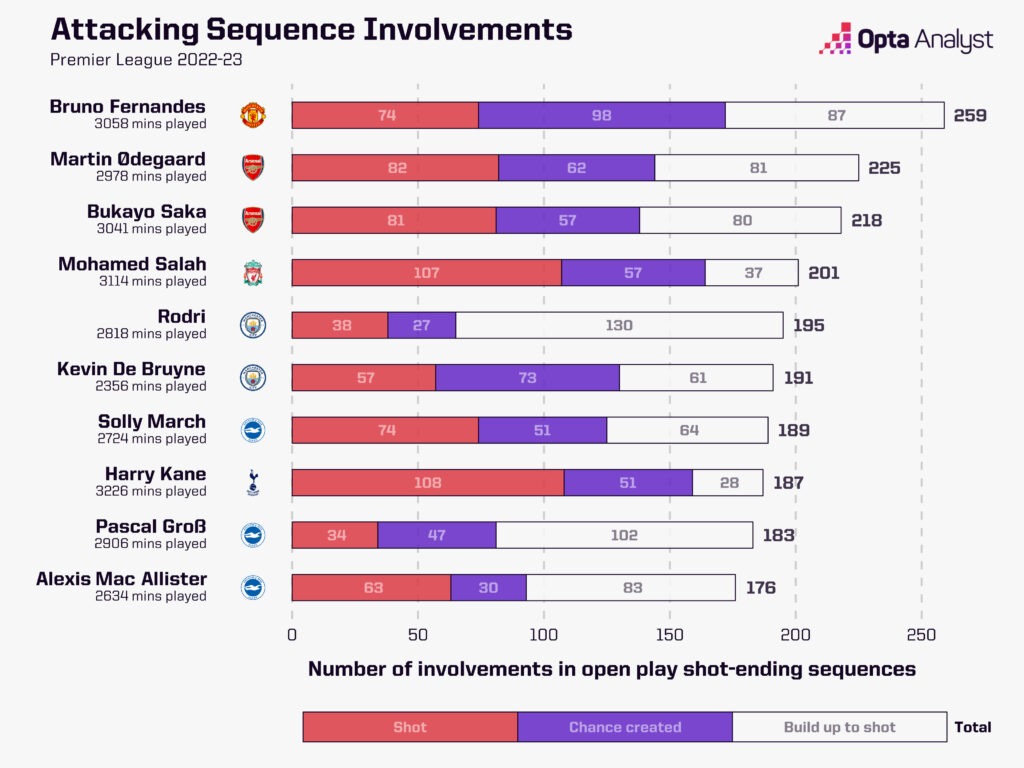
Of all central midfielders in the Premier League in 2022-23, Ødegaard leads the way for direct shot involvements, which are when a player’s only involvement in their team’s move is taking the shot (63). So, while he clearly plays an important role in building Arsenal’s moves and helping them progress up the pitch, there have been 63 occasions – or nearly two every game he plays – when he has a shot having played no part whatsoever in the team’s move. Sometimes, he is almost a striker when Arsenal have the ball, too.
The consequence of that has been his stark improvement in his goalscoring. With 15 goals, Ødegaard is having by a distance his best season in this regard, way ahead of any other central midfielder in the whole Premier League, as well as being Arsenal’s joint-top scorer alongside Gabriel Martinelli. He is taking more shots (2.8 per 90, up from 1.7 in 2021-22) and posting more expected goals, too, with 0.30 per 90 compared to 0.16 last season.
While he has been a greater presence inside the penalty area this season and his expected goals have gone up, he is still outscoring his xG by an impressive rate: His 15 goals having come from 9.93 xG. His three goals from outside the penalty area will have helped him beat the xG model, and it will be interesting to see if he can make this rate of goalscoring a staple of his game, rather than remembering 2022-23 as a mere hot streak.
The list of stats he stands out for goes on, and his creative numbers have also been exceptional. Nobody in the Premier League can better his tally of eight secondary assists – the pass before the assist – for the season, while his seven assists puts him joint 11th in the league. Only Fernandes (87) and De Bruyne (68) have created more chances for teammates in open play than him (58).
This has been the season in which the precocious talents a 15-year-old Martin Ødegaard displayed have truly blossomed. Up until now he was a player with vast potential who would change games with the odd piece of magic. He is now a ruthless machine, a captain who leads by example, and very much the complete midfielder.
“I think I can influence the game in more ways now — not just with the ball, but in other areas,” Ødegaard told The Telegraph in an interview earlier this year. The numbers prove he is absolutely right.
Enjoy this? Subscribe to our mailing list to receive exclusive weekly content. And follow us on Twitter too.
